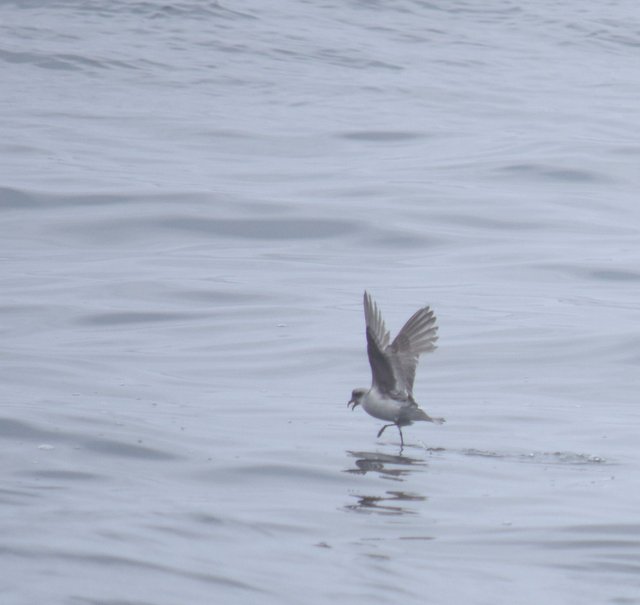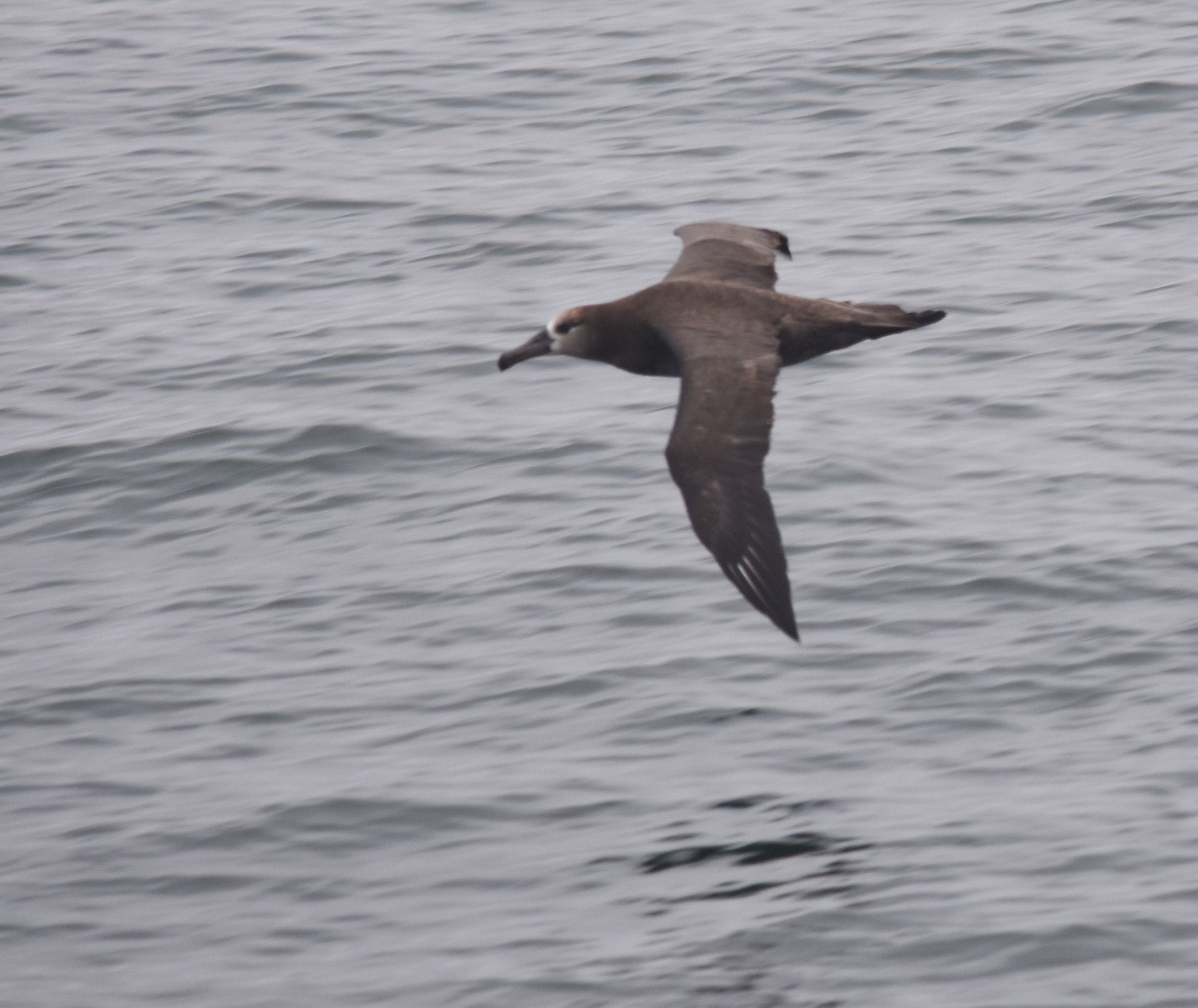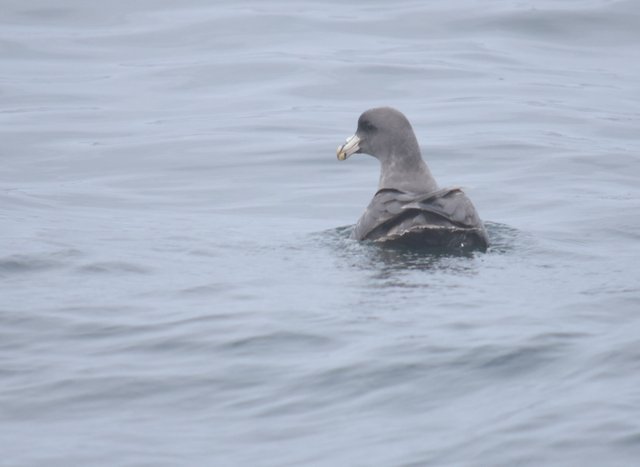
A Fork-tailed Storm Petrel pattering on the water seen on a pelagic birding trip on the Monte Carlo on a Westport Seabirds trip.
Storm Petrels are small pelagic birds, many species rarely seen from shore except on their breeding grounds that generally nest in burrows or crevasses often on remote ocean islands where they are safe from rodents, snakes, cats and other predators. This Fork-tailed Storm Petrel is the most common storm petrel seen from shore or in near-shore waters in the north Pacific region. This photo was taken on a Westport Seabirds pelagic trip. The Fork-tailed Storm Petrel is the only light colored storm petrel found in the Northern hemisphere so is one of the easier storm petrels to identify. It can be very difficult to see at times, because the blue-gray color seems to melt into the sea surface.
Storm petrels are members of the order Procellariiformes and split into two families, the Northern Storm Petrels, generally found in the northern hemisphere, and the Austral Storm Petrels that are found in all oceans, though most of the species are primarily Southern hemisphere species. All of these are what is often referred to as tube-noses, describing the specialized tube found on the dorsal proximal bill that allows them to drink salt water and excrete the salt through the tube. This is a trait also found in the Albatross, Fulmar, Pteroderma petrels and Shearwater families of species. Together the tube-noses are the primary species sought out by birders who go on pelagic birding trips on boats that go many miles off shore in search of species that spend their lives at sea. Here are a couple of other photos of other tube-nose species.

Black-footed Albatross, again off the Washington State coast on a pelagic trip.

Northern Fulmar, another common North Pacific tube-nose.
Good birding. Steem on.
I love the info! How long have you been studying birds?
Downvoting a post can decrease pending rewards and make it less visible. Common reasons:
Submit
35 years. Just really began photography, so much to learn there.
Downvoting a post can decrease pending rewards and make it less visible. Common reasons:
Submit
There is a lot to learn. I got the camera I have been wanting and I feel I'm not doing it any justice so far.
That is a long time to study birds. I hope I am so lucky. :) What got you into birding?
Downvoting a post can decrease pending rewards and make it less visible. Common reasons:
Submit